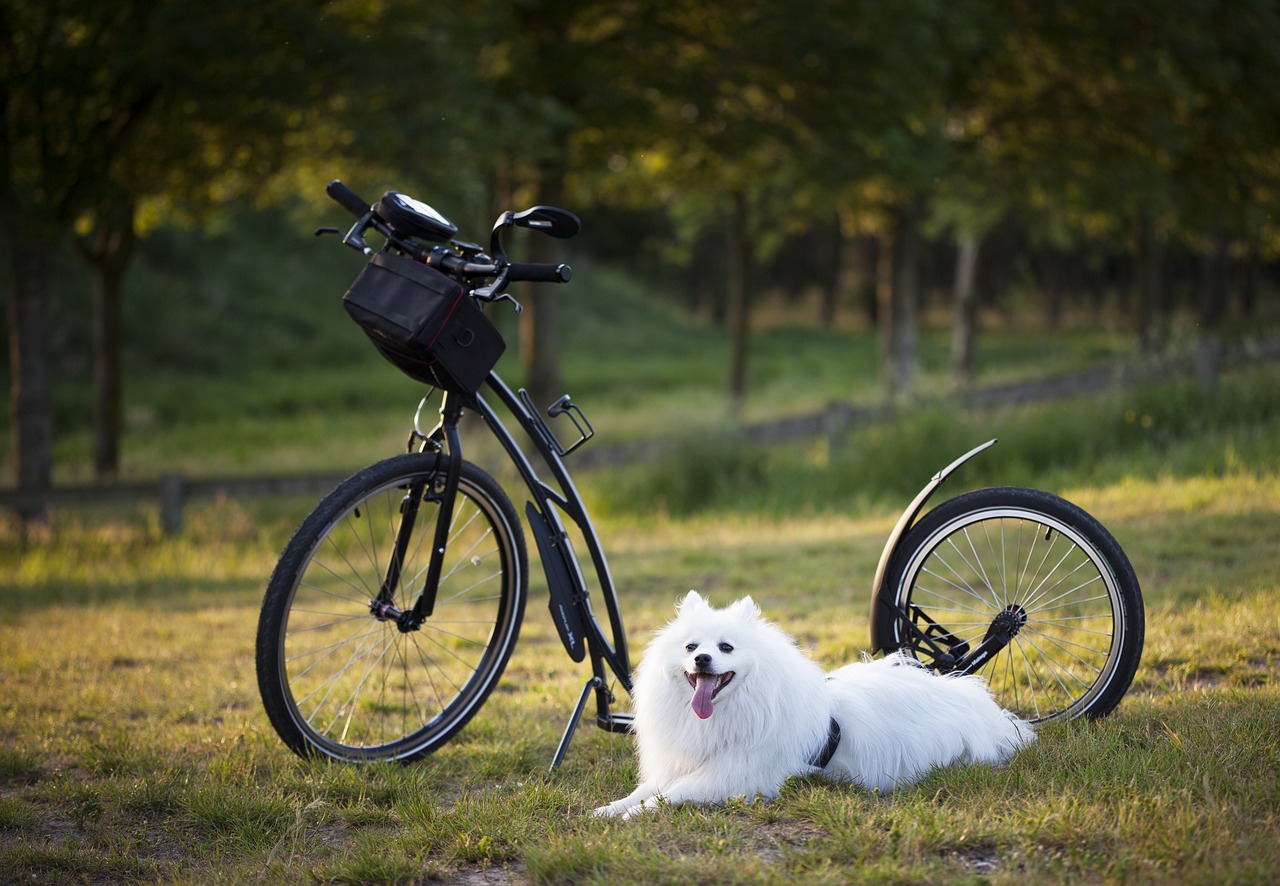Biking with your dog can be a fun and healthy activity for both of you, but it is important to take some precautions to ensure the safety and well-being of your pet. It’s actually a great way to spend time with your best friend and stay healthy at the same time. It is necessary to clarify that this is not an activity for all dogs.
In any case, there are a few things you can do to make sure the experience is safe and fun for both of you. In this post we have prepared some recommendations to make cycling with your dog safe and fun.
Cycling with your dog: Recommendations
- Consult a veterinarian: Before starting any intense physical activity with your dog, make sure he is in good health and has no medical problems that could be affected by exercise.
- Pre-training: Before taking your dog on a bicycle, it is essential that he is well trained in basic obedience, especially in commands such as “come” and “stop”. Your dog should be familiar with walking beside you without pulling on the leash.
- Use a specific harness: Never tie your dog directly to the bicycle, as this can be dangerous if the dog pulls abruptly. Use a cycling-specific harness that attaches to the bike frame, allowing the dog more freedom to move, but still be safe.
- Gradually introduce the bike: Before going out to ride, introduce the bike to your dog while he is in a calm and safe environment. Let him get used to the object and, if necessary, reinforce with positive rewards.
- Start slowly: Start pedaling at a slow pace so your dog can get used to the movement and rhythm. Avoid uneven or crowded surfaces at first.
- Pay attention to temperature: Don’t forget that dogs can be more sensitive to heat than humans. Avoid going out during the hottest hours of the day and be sure to carry water for your dog at all times.
- Regular breaks: Make frequent stops so your dog can rest, drink water and stretch its legs. Do not force it to run beyond its limits.
- Watch for signs of fatigue: Pay attention to signs of fatigue in your dog, such as excessive panting, lameness or disinterest in continuing. If you notice any signs of discomfort, stop and rest.
- Choose safe routes: Opt for quiet and safe routes, away from traffic and crowds. Places such as parks or bike paths are often ideal options.
- Keep safety in mind: Always wear proper protective gear, such as a helmet for you and a harness for your dog. Also, make sure your dog is identified with a tag containing your contact information.
Enjoyment is important
You should know that every dog is different. That is why some may not feel comfortable with this activity and may even have a hard time with it.
Respect your pet’s boundaries and never force your dog to do something he doesn’t want to do. The safety and well-being of your furry companion should always be the number one priority.
Image courtesy of https://pixabay.com, all rights reserved.








